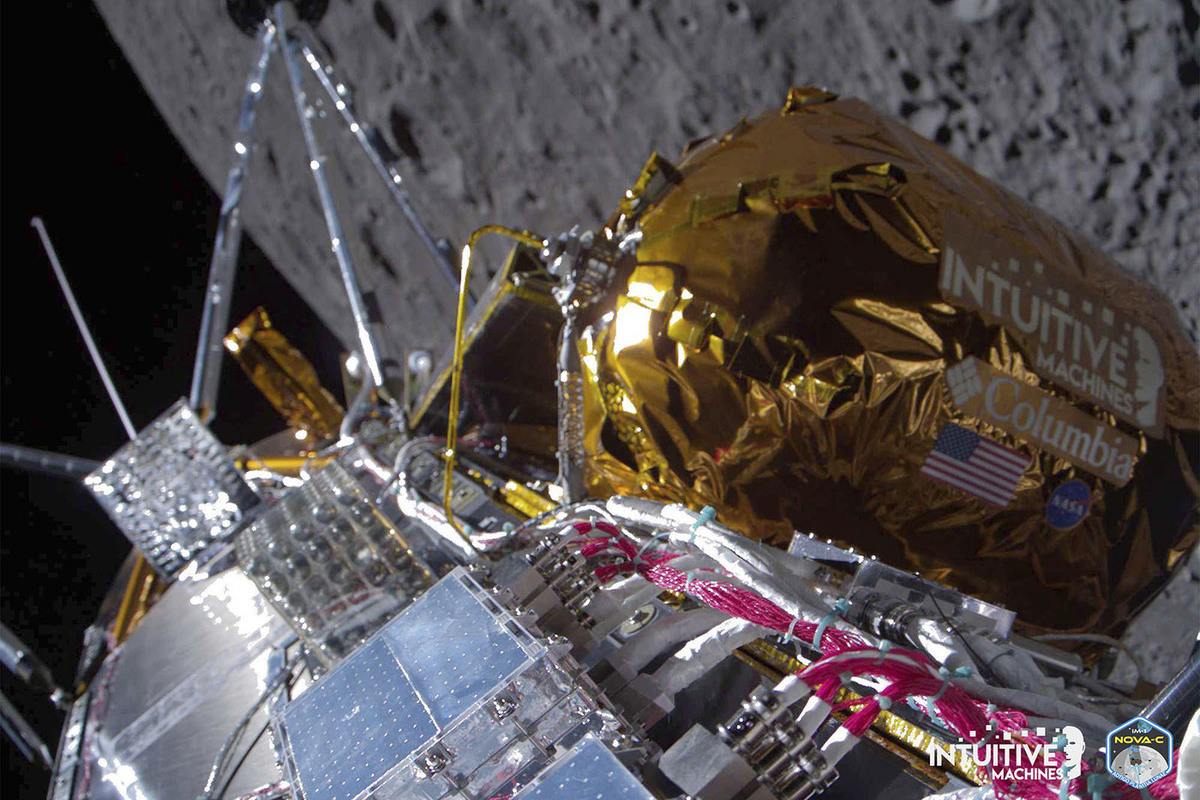The reasons for the failure of the American Odyssey mission on the Moon have been revealed
[ad_1]

The flight of the American spacecraft Odysseus (“Odyssey”) to the Moon will be interrupted after a lateral landing. Mission control engineers expect a loss of communications with the privately owned U.S. lunar lander Odysseus on Tuesday, leading to a mission abort five days after its lateral landing, said Intuitive Machines, the company that developed the spacecraft.
It remains to be seen how much scientific data could be lost by shortening the life of Odyssey, which would have otherwise lasted seven to 10 days on the Moon, according to previous estimates by the company and its biggest customer, NASA.
The company’s prediction of a premature end to the mission comes as new details emerged about testing shortcuts and human error that led to the spacecraft’s laser-guided rangefinders failing in flight before its landing on the moon last Thursday.
An Intuitive Machines spokesman said the loss of the rangefinders was due to the company’s decision to forego pre-launch testing of the laser system to save time and money during Odysseus’ pre-flight checks at NASA’s Kennedy Space Center in Florida.
“There were certainly things we could do to test it and actually get it up and running. It would take a very long time and would be very expensive,” Mike Hansen, the company’s head of navigation systems, said in an interview with Reuters on Saturday. “So it was a risk as a company that we recognized and took that risk.”
Intuitive Machines said Friday that laser rangefinders designed to transmit altitude and forward speed readings to Odysseus’ autonomous navigation system were inoperable because company engineers forgot to unlock the lasers’ safety switch before the Feb. 15 launch. The lock, similar to a firearm’s safety, can only be disengaged manually.
A rangefinder malfunction discovered just hours before the final descent forced controllers to improvise an experimental detour to avoid what could have been a disastrous emergency landing.
Mike Hansen, the engineer who created the software “patch” that solved the problem, said the company has yet to determine whether a makeshift navigation solution, which used an experimental system supplied by NASA to the lander, could have been a factor in the spacecraft’s lateral landing.
The company said during its first press briefing after landing on Friday that Odyssey caught the underside of one of its six landing legs on the rough lunar surface during its final descent and toppled over, coming to rest horizontally, apparently resting on a rock.
Intuitive Machines executives speculated that the spacecraft’s forward speed during landing, about twice as fast as expected, may have been a factor in the stumble. But it remained unclear whether the use of original laser rangefinders could change anything.
In any case, Odysseus’ side position significantly limited the exposure of its solar panels to sunlight needed to recharge its batteries. What’s more, two of its antennas were pointed toward the ground, making communication with the lander difficult, the company said Friday.
Intuitive Machines executives said at the time that engineering teams would need more time to assess how this would affect overall flight.
In an update posted online Monday, the Houston-based company said: “Dispatchers intend to collect data until the lander’s solar panels are no longer exposed to light. Based on the positions of the Earth and Moon, we believe controllers will continue to communicate with Odyssey until Tuesday morning, five days after landing.
NASA, which has several research instruments on board the craft, said the payloads were designed to operate for seven days on solar power until the sun sets over the landing site near the moon’s south pole.
Company executives told reporters Friday, the day after Odysseus landed, that its payload could last about nine or 10 days in a “best-case scenario.”
Intuitive Machines shares fell 35% on Monday, The Guardian writes.
Despite its less than perfect landing, Odyssey became the first American spacecraft to land on the Moon since astronauts Gene Cernan and Harrison Schmitt set off to the lunar surface on NASA’s final crewed Apollo mission in 1972.
It was also the first lunar landing of a commercially produced and operational spacecraft and the first of NASA’s Artemis program, which aims to return astronauts to Earth’s natural satellite this decade before China lands a crewed spacecraft there.
Intuitive Machines said it spent approximately $100 million on the lander and received $118 million from NASA as part of the agency’s Commercial Moon Payload Services program, a low-budget effort to encourage competitive commercial missions to the Moon.
[ad_2]
Source link








